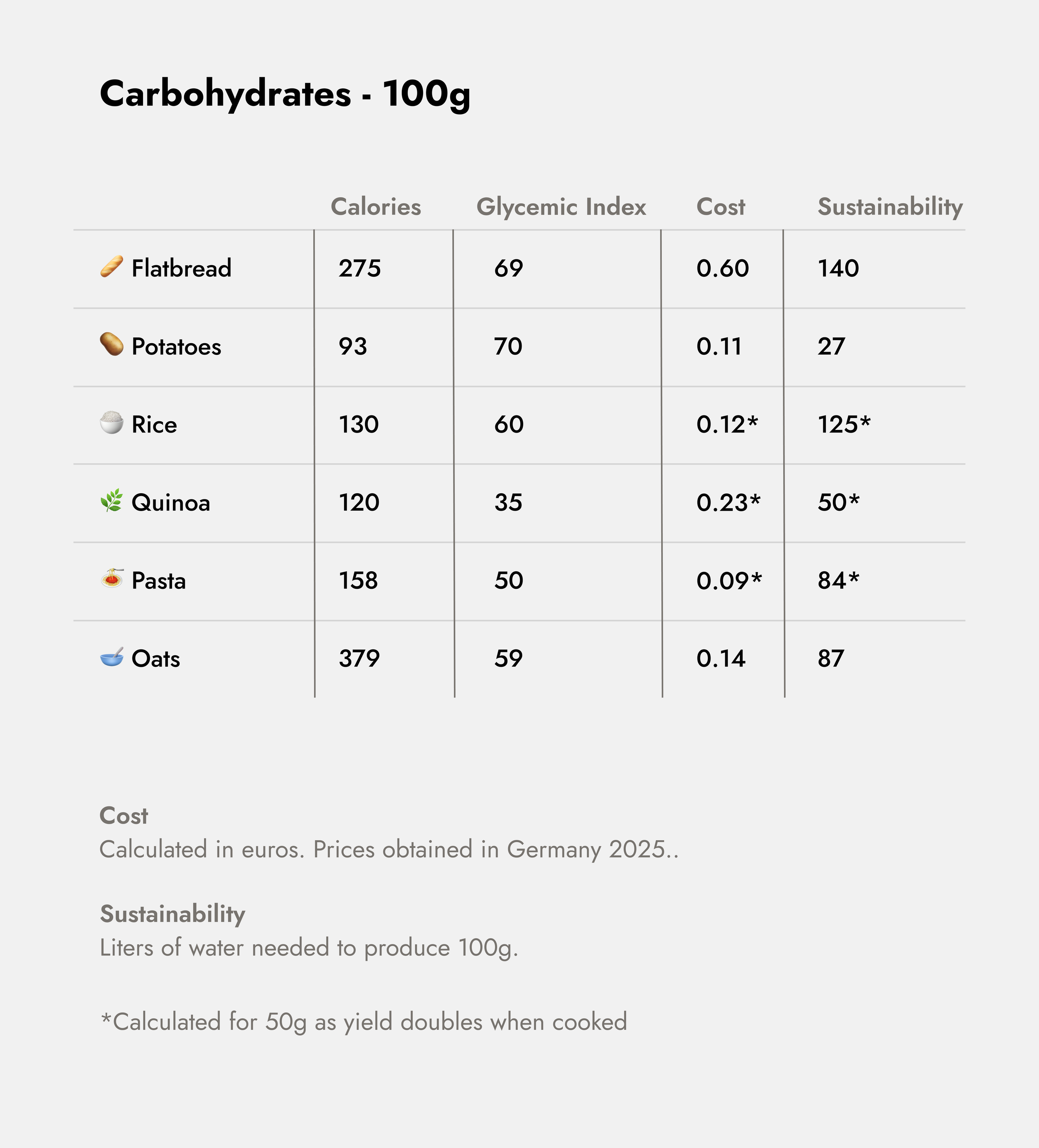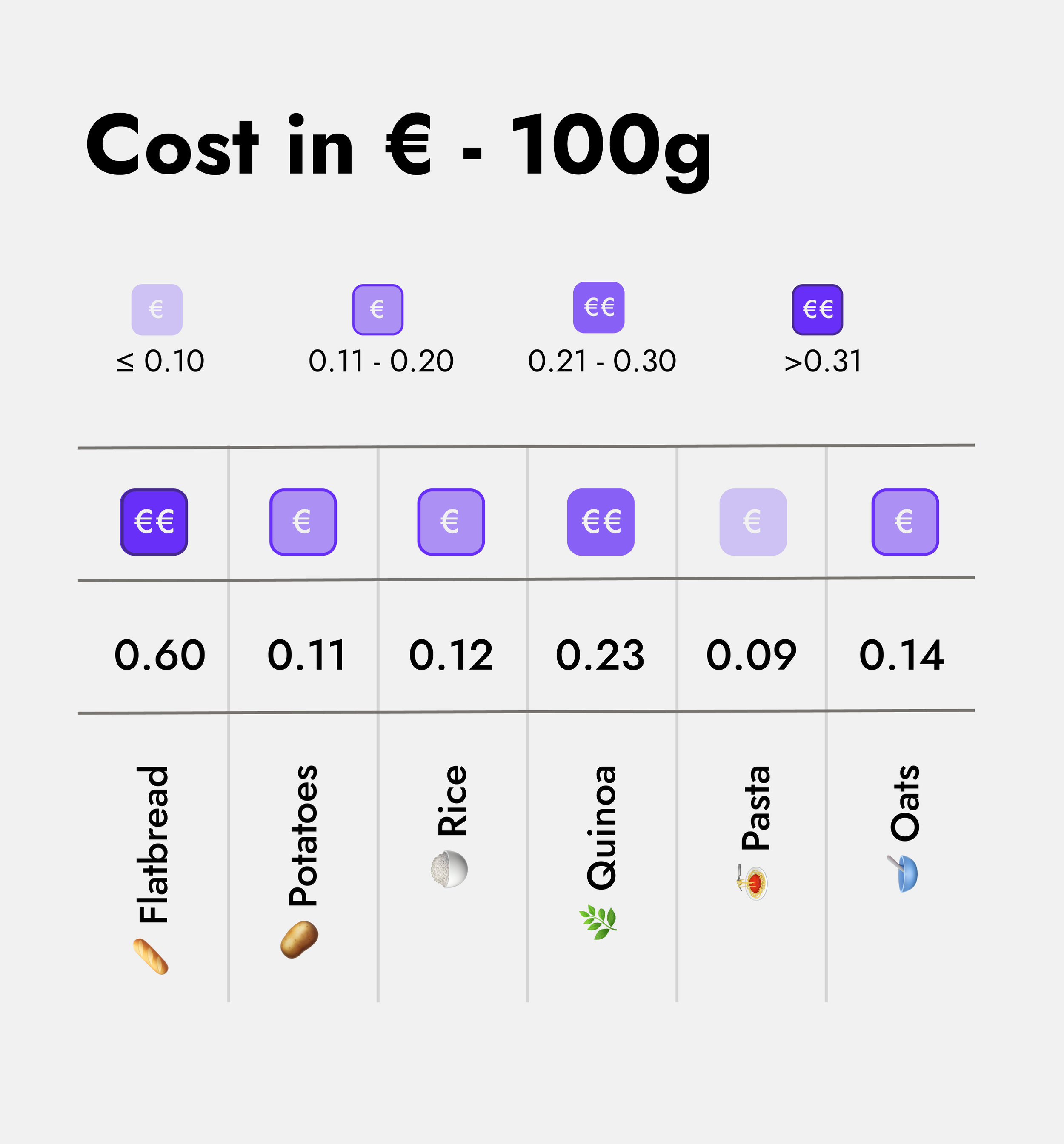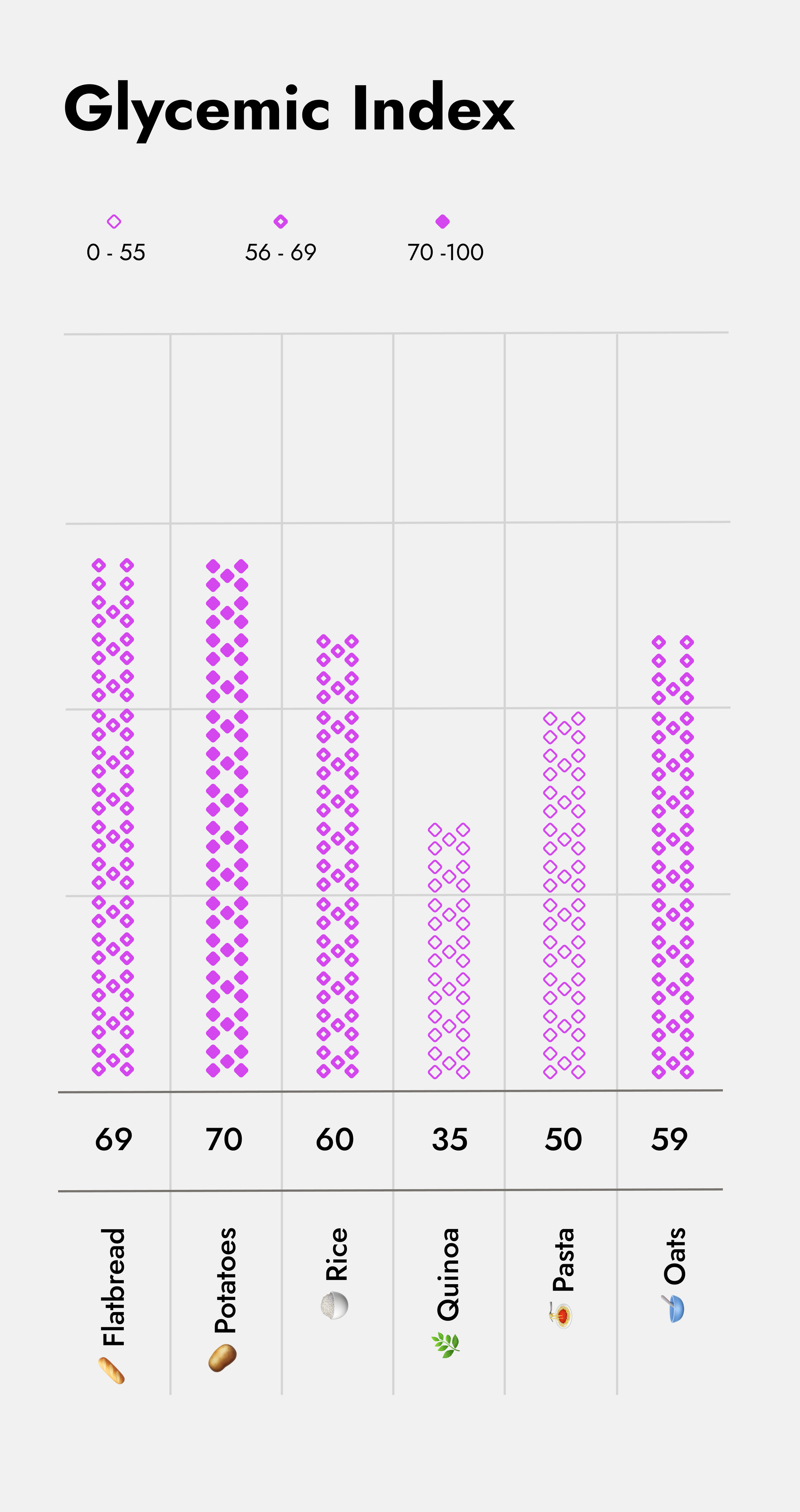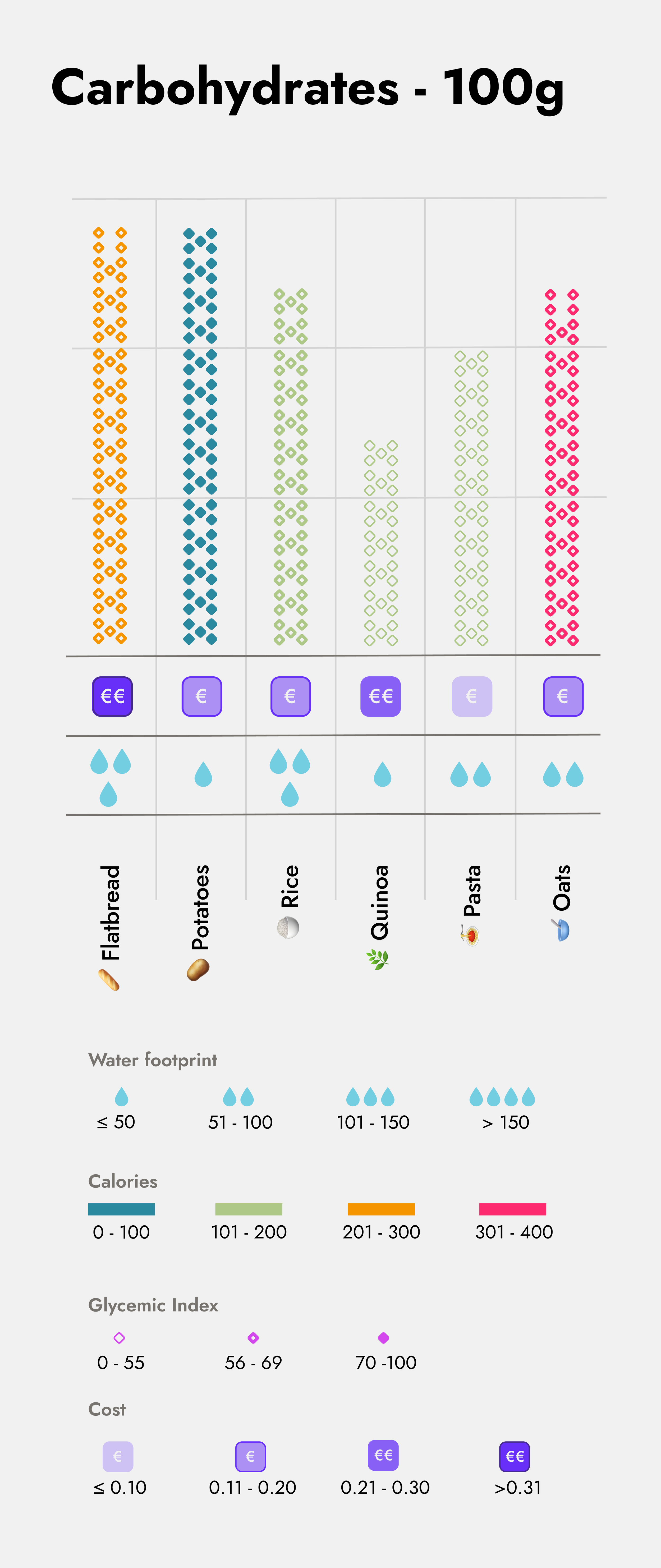Carb Contest
Food • Data • Dataviz
Apr 22
All carbohydrates are beautiful.
Let’s give them a round of applause!
It’s time to talk about food.
We are
going to be dramatic and use up our
production budget.
An auditorium. Lights
dim, music playing, the crowd murmuring in
anticipation. There is electricity in the air.
Suddenly, everything goes silent and dark. The crowd
whispers quiet down. Spotlights flood the stage as
the glossy, shimmering curtains are pulled to
reveal... carbohydrates. It’s a
beauty contest.
“All carbs
are beautiful,” the host announces (I’m the host, I
love all carbs).
“Let’s welcome tonight’s
contestants with a round of applause!”
Cheers and applause erupt in the auditorium as
carbohydrates; complex and simple, staples from all
over the world, walk in their finest attire.
As the host, I remind you: “We aren’t
looking for a winner tonight, as you’re all
beautiful.” The carbs nod and smile in agreement.
This exhibition show is for charity.
What’s on the agenda for tonight’s show?
Four feats of strength and
beauty:
Caloric value
Cost
Sustainability
-
Glycemic Index
Let’s take a moment to learn more about our lovely
contestants.

Table view of carbohydrates
Our contestants
Many carbohydrates from around the world wanted to join us tonight, but for this special charity contest, we only picked 6 lucky participants:
🥖 Flatbread
🥔 Potatoes
🍚 Rice
🌿 Quinoa
🍝 Pasta
🥣 Oats
For most of them, the judges will evaluate 100g for calories, but for sustainability and cost we’ll use 50g, as their yield doubles once cooked.
What will the winner get?
The crowd loses it
when they hear the award…
1kg of butter donated
to their favorite charity!
Ready for the first event?

Calories per 100g
Round 1: Calories
We start on a controversial topic: calories.
A quick disclaimer by your host:
Often,
carbs get a bad reputation in nutrition. That
they’ll make you gain weight or that your body
doesn’t actually need them. But carbs are
essential fuel for us. Carbs are broken down
into sugars that the body uses as
energy. The problem starts when we have
extra energy we don’t need, and this
gets stored in the body thus leading to
weight gain.
That being said, the judges can now rank our
contestants.
🥔 Potatoes is the first one highlighted with
the lowest calories, followed by 🌿
Quinoa and 🍚 Rice, with 🍝
Pasta right behind them. On the next tier, 🥖
Flatbread stands alone, and finally, 🥣
Oats step forward with the highest calorie
count.
The audience claps, but the judges still seem divided. Some support lower- calorie options as they need to be mindful of their weight, while others opt for more calories to fuel their intense cardio sessions.
We love a bit of controversy! The carbs smile
knowingly.
They’re used to dealing with both
criticism and demonstrations of undying love.
Let’s move on to the next event!

Cost in euros per 100g
Event 2: Cost
More drama! The judges have to adjust the rules to properly evaluate our contestants. It seems the differences are barely there. After some deliberation, the new rubric accounts for how low the prices of carbs can be.
The rubric is considering numbers from Germany, specifically Munich. These numbers were obtained from a local supermarket chain that offers online ordering in early 2025. The same source of truth for a certain martial arts tournament organized by the same production company... see it here!
The judges request the carbs to step forward one by
one.
Wait a second…the crowd gasps!
Carbs
made up from more than one ingredient are on both
ends of the scale.
🍝 Pasta is ranked as
the least expensive carb, 🥔 Potatoes and 🍚
Rice follow almost at the same time, and a
few seconds later it’s 🥣 Oats. 🌿
Quinoa waits a bit more, perhaps because of
transportation and export costs, and then finally
it’s 🥖 Flatbread.
Wow, the margin is so narrow! We’re competing for
cents!
All beautiful carbs are very
mindful of your budget and
wallet.
They know this as well and
smile full of pride as we prepare for the next
event!

Water footprint in L per 100g
Event 3: sustainability
We are at another very close event. The judges are working tirelessly to adjust our scale once again. While they review the rubric, let me give some context to our audience.
Our carbs are mostly vegan! Only 🥖 Flatbread and 🍝 Pasta could contain animal products like butter or eggs. However, the overall amount of water needed is not a lot, especially when you place it in context with other foods like 🥩 Beef steak, which, for reference, needs over 1500 liters of water per 100g.
The rubric the judges are working on rates sustainability based on the food’s water footprint, meaning the amount of water needed to produce 100g. These are rounded estimates and serve as a starting point. Keep in mind that a high water footprint doesn’t account for transportation costs or other emissions related to production and distribution.
Another thing we can consider here is social perception and global trends. Let’s make a special mention of 🌿 Quinoa, which became very popular a few years ago as it was being marketed as a superfood. (Side note: this is a marketing term, not a scientific one.) Although 🌿 Quinoa is a very healthy food that also contains a bit of protein, the hype around it increased so much that it affected prices globally. You can read more about superfoods here.
The judges are ready with their scores!
Ah! 🥔 Potatoes step forward with the lowest water footprint, then it's 🌿 Quinoa and 🥣 Oats. In the next tier, it’s 🍝 Pasta, and finally 🍚 Rice followed by 🥖 Flatbread.
Again, the numbers are considerably low.
Round
of applause to all before we move to our final
surprise event!

Glycemic Index in common carbs
Event 4: Glycemic Index
As our contestants get ready for the final event, let’s share a bit about this new category.
What is the glycemic index?
It’s a
number that tells you how fast your
body will
transform
carbs into sugars, specifically
glucose. This is especially important for people
with diabetes, but it’s also useful for
anyone looking to avoid that
post-sugar-high crash.
Less processed foods tend to have a lower glycemic index and, in turn, are often more nutritious and less caloric than highly processed ones. So, a low glycemic index can be a helpful clue that you’re eating something healthy.
Now with that context, let’s see our participants in their gala outfits!
First, 🥔 Potatoes walk in with a high glycemic index. In the medium range, we have 🥖 Flatbread, 🍚 Rice, and 🥣 Oats. Then in the low range, it’s 🍝 Pasta, and finally 🌿 Quinoa with the lowest score.
The audience and judges all clap.
Cheers raise
in anticipation for the final event.
“OK, we’re ready for the final combined
scores… Who will win the priceless butter prize?”

Water footprint, calories, glycemic index, and cost per 100g
Ah, it seems the scores are inconclusive!
It depends on the audience’s vote.
Who will
you choose?
Need to stretch your grocery budget?
🍝 Pasta is your go-to.
Need something
light on calories? 🥔 Potatoes are here to
help.
If you want something a bit more
nutritious and with a lower glycemic index, try
🌿 Quinoa, with the bonus that it brings a
bit of protein to the plate too, just be mindful of
how it’s sourced.
If you have a busy day ahead and need the calories to get you through, 🥣 Oats have you covered. 🍚 Rice is still a global staple—accessible, easy to prepare, and incredibly versatile. 🥖 Flatbread is ready to go, saving the day when you don’t have time to cook and need fuel on the move.
Each of these beautiful carbs has its
advantages and limitations.
They
are all so lovely and humble,
there’s no need to choose a single winner.
There could be a different winner every day of
the week!
The judges and I have decided: we’ll donate 1kg of butter to all of them to enjoy as they please!
This concludes our first-ever
Beauty Carb Contest.
Let’s go back to
Munich.
I hope this little show helped you
discover new aspects of carbs you
hadn’t considered and peeled back some of the
fear and misinformation around them.
We
all need fuel, and we all need to choose the
best energy source depending on our
daily needs. You might need something
different on your plate if you’re heading into a
martial arts tournament… versus a restful day
watching beauty pageants at home.
The point is: eat something delicious that lets you do what you need to.
Sources:
-
Calories:
-
Nutritionix. https://www.nutritionix.com/food
-
-
Glycemic Index
-
Glycemic Index Guide “Glycemic Index Chart: Glycemic index and glycemic load ratings for 500+ foods” https://glycemic-index.net/glycemic-index-chart/
-
WebMD. “How to Use the Glycemic Index” https://www.webmd.com/diabetes/glycemic-index-good-versus-bad-carbs
-
-
Water Footprint:
-
The Guardian. “How much water is needed to produce food and how much do we waste?” https://www.theguardian.com/news/datablog/2013/jan/10/how-much-water-food-production-waste
-
Huffington Post. “This Is How Much Water It Takes To Make Your Favorite Foods” https://www.huffpost.com/entry/food-water-footprint_n_5952862
-
Water Footprint Calculator. "Water Footprint of Food Guide." watercalculator.orgget-green-now.com+4Water Footprint Calculator+4Water Footprint Calculator+4
-
That’s Enough About Me!
What do you think? What should I focus on next?
So, do you also love carbs? Are some carbs more beautiful than others? I don’t think so but maybe now you want to win the priceless butter price…
Let me know—shoot me an email! 😊
📩
sifuentesanita@gmail.com